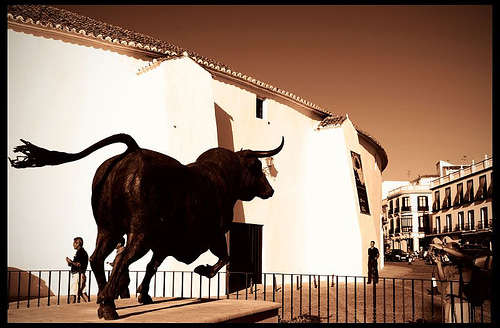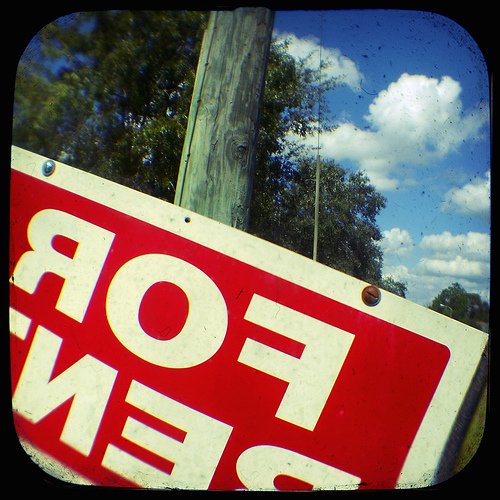The rental market in Houston Texas is hot. Rents have been rising steadily for the last 4-5 years with average time on market dropping to under 30 days. Landlords are in the driver’s seat and the high demand for their properties allows them to ask for longer term leases, higher credit tenants and rent escalations built into the deal. What’s most important is that this rush of demand is fueled by real economic and job growth, not some artificial inflation. Under the current conditions you could literally close on any property on Friday and have a long term tenant in place the following Friday. And he probably had to fight off four or five other applicants to get accepted.
In the current market, it is easy for an investor to feel invincible – feel like they can’t go wrong. All the talk about quality of neighborhood, school district, amenities, upgrades etc. seems irrelevant. After all why would you go and spend 40% more money on a “better property” when you can buy cheaper, lower grade assets for a fraction of the price. With rental demand as strong as it is now, they will both rent out quickly and your ROI will be much higher on the lower end stuff. Right?
Mark Cuban said: “Everyone’s a genius in a bull market. Recessions are the great equalizer”. These are good times for investors but they’re also dangerous times. The euforia produced by the rental bull market can fool shortsighted investors into dropping their guard and skimping on asset quality. Incoming rent will cover all the cracks in your asset selection for the time being. There’s a funny thing about cracks though. No matter how often you patch over them, sooner or later they always show through in times of great tension. So ask yourself this: What would happen to your portfolio if the rental market weren’t this hot? If there were fewer tenants looking for properties and competition among assets, would they pick yours? In other words, would your portfolio withstand the test of time and all the changes in market conditions it brings?
If you are a long term investor, the number one factor you have to seek when building your portfolio is Quality. Don’t listen to the siren calls of cheap properties in cheaper locations. Build a portfolio that will perform no matter the market.




Pingback: Houston rental market rises again: Highest average rent on record
Hi Erion –
I am curious if you could briefly touch on the possible severity of changes in rent-costs in different market cycles.
I was overseas when most of the crash happened and it is clear that house prices were decimated in some markets (therefore cause in rush of new renters and the current upswing with the “rental” arena), but can you give any idea as to the relative change in rents should people begin once again to purchase homes? How high would you expect vacancy rates to climb?
I am trying to get a feeling for what to expect in terms of rent-cycles as I enter the investment property arena with a long-term outlook.
Great question.
In most cases, market cycles affect vacancy rates before they affect rent levels. So, when the tenant demand drops and you have more than sufficient supply, you will start seeing properties stay vacant longer. Some of them will be forced to drop the price to land a tenant as well. The better the quality of the property and its location, the better it will weather this change in environment.
Right now we’re projecting 5% for vacancies even though many of our clients are yet to experience an empty month.
The level to which the vacancy rate would climb is dependent on the circumstances that are causing – a normal market cycle, you’re probably looking at 10-15% on the downswing. A financial catastrophe – we don’t really know.
The good news is that there’s 30-35% between a good cash-flowing property and the break even point. In other words, you could lose 30-35% of your incoming rent either through vacancy or rent decline and still breakeven so that’s a pretty good hedge against market cycles. If you think about it, a financial disaster that would cause the rent levels to drop by 35%, would pretty much decimate any holding you might have in say the stock market.
As I proceed with my analyses, I tend to see a lot of other investors plugging-in pro-forma vacancy rates from 3-10% for any given property. I suppose if the rate was any higher, then at least other expenses would perhaps decrease given the lack of a tenant causing wear-and-tear to the property. Otherwise, if vacancy were to truly hit 35%+, then I think we all have much greater problems to deal with! Besides, we just turned the corner on the biggest dip in recent real estate history and things seem to be OK.
I very much like how you break-down and analyze the macro-view of the micro-market concerning residential investing. I, too, agree and feel that too many investors (especially these days) chase after sub-par properties and neighborhoods while only focusing on instant equity rather than more solid neighborhoods that perhaps yield less return. You pointed out in your reply how these “better” neighborhoods tend to emerge from the down-cycles in a better position – much like large, blue-chip stocks holding steady over time. The biggest problem I face here in California is that “A” and “B” class neighborhoods do not always provide for the accumulation of investment properties that would allow for positive returns in most cases – housing and/or fixers are simply to expensive.
Clay
California is tough. Price to rent ratios are out of whack in most locations. Plus you have to enjoy wearing the mantel of the “evil landlord” due to unfavorable laws in the state that overwhelmingly favor Tenant. Then there’s the price swings.
If you’re interested in long term real estate investing you have to do what most California investors are doing and have done since 2005-06. Invest elsewhere – in friendlier “climates”. That first deal out of state can be hard to do but once you do it, you will never look back.